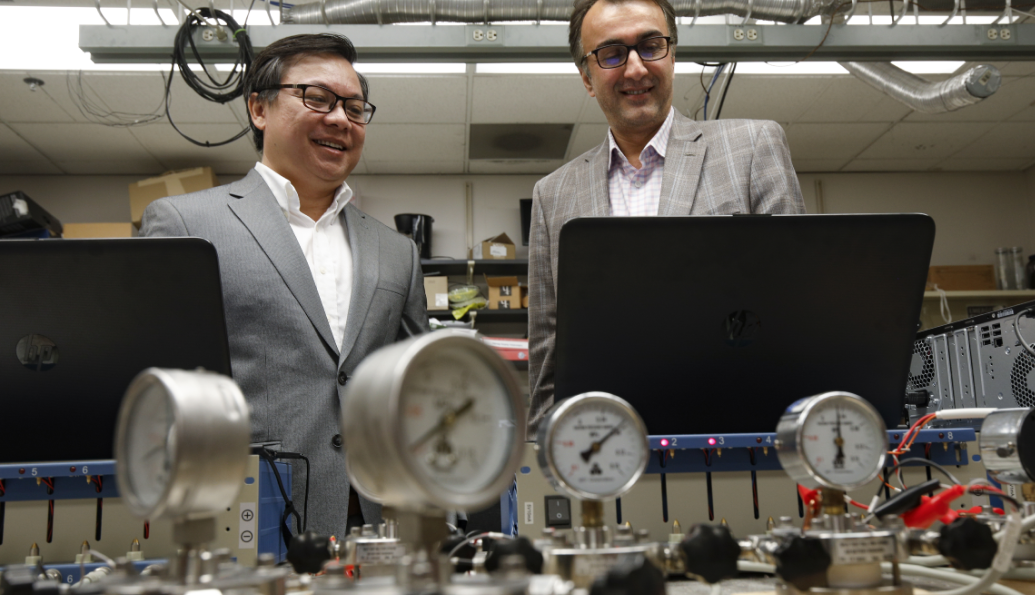UIC researchers investigate new source of power for lithium batteries

Text block one
Ever since lithium-ion batteries entered the world in the late 20th century, these rechargeable power cells have become an invaluable energy source, powering our cell phones, laptops, electric toothbrushes, drills, and cars.
But the performance of traditional lithium batteries has plateaued in recent years, just as humanity’s desire for greener energy sources has grown.
UIC engineering researchers hope that their recent grant from the U.S. Department of Energy will lead to a new reactant within the batteries, fulfilling the need for greater performance power.
Mechanical and Industrial Engineering Department Associate Professor Amin Salehi-Khojin, along with Chemical Engineering Department Associate Professor Anh Ngo and Professor Vikas Berry, received the grant to develop a high-rate, high-capacity lithium carbon dioxide (CO2) batteries that meet strict DOE Office of Energy Efficiency and Renewable Energy performance, safety, and operational lifetime requirements.
Lithium-ion batteries are made up of power cells that have four components: a cathode made of lithium that supplies ions, the anode that transfers the electrical current out of the battery, an electrolyte material that allows the ions to travel from the cathode to the anode, and a separator that keeps the cathode and anode apart.
Salehi-Khojin explained that scientists have been trying to develop new batteries based on different chemical transformations, including lithium-sulfur and lithium-oxygen, which could both boost energy performance.
But another chemical transformation battery involving air components that has not been studied but could be superior to these reactions is a battery based on a CO2 reactant.
“We have been thinking about how we can go to the next step of the energy system, and we came up with the idea to use carbon dioxide rather than oxygen in the system,” Salehi-Khojin said. “It is more environmentally friendly and more stable, so the battery operation would be safer.”
He added that a CO2-based system is not as complex as the lithium-oxygen batteries, which would mean the development and production on a commercial scale would be easier.
The two professors were able to develop carbon-neutral and fully rechargeable Li-CO2 batteries in preliminary experiments in the lab and are hoping this new grant will help them continue to improve the performance and allow the creation of batteries for the real world.
Ngo is working on the modeling and prediction of the structure of the battery, while Salehi-Khojin’s lab will work on synthesizing the materials and performing experiments. The results of the experiments will then help improve the model.
Berry and his group will work on characterizing the interfaces between lithium compounds and the electrode to understand the chemical and material structure.
Salehi-Khojin noted the data show that this type of battery has huge potential, and researchers on the project hope they can get attention from the community that will lead to a serious investment in this technology.
“UIC is leading the charge with this kind of battery, and we are hoping it can be a signature research project,” Salehi-Khojin said. “In the next one or two years, I really believe we will have a breakthrough.”